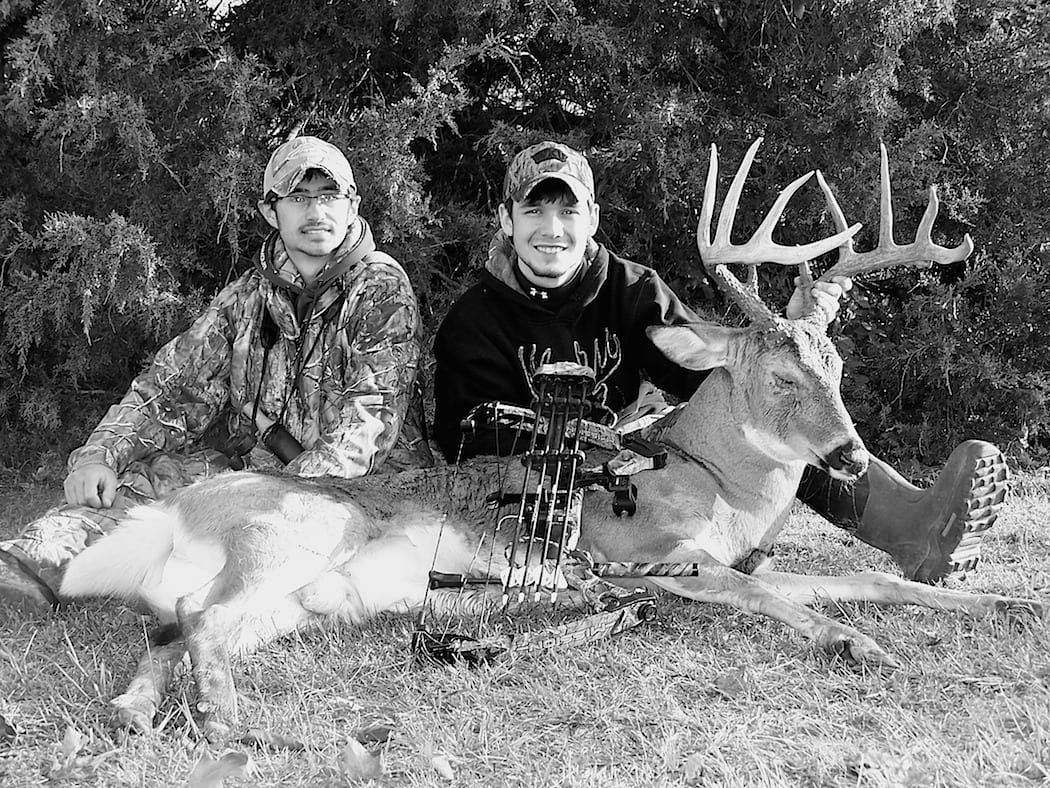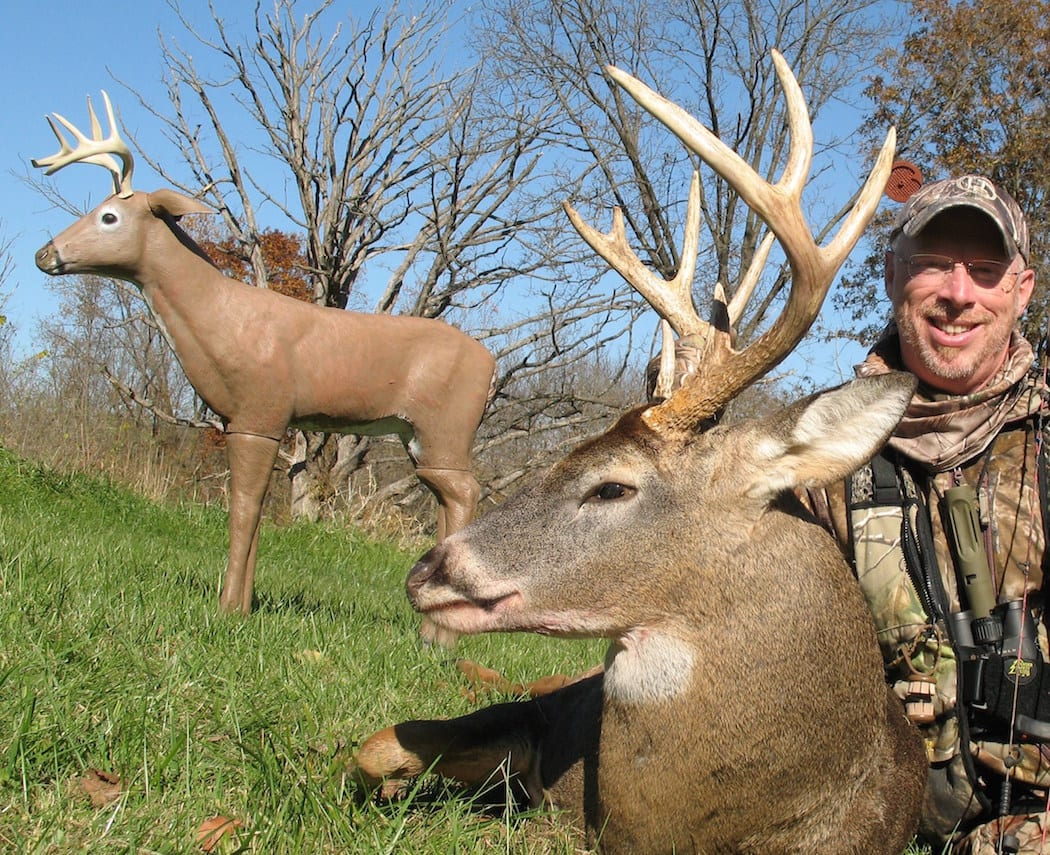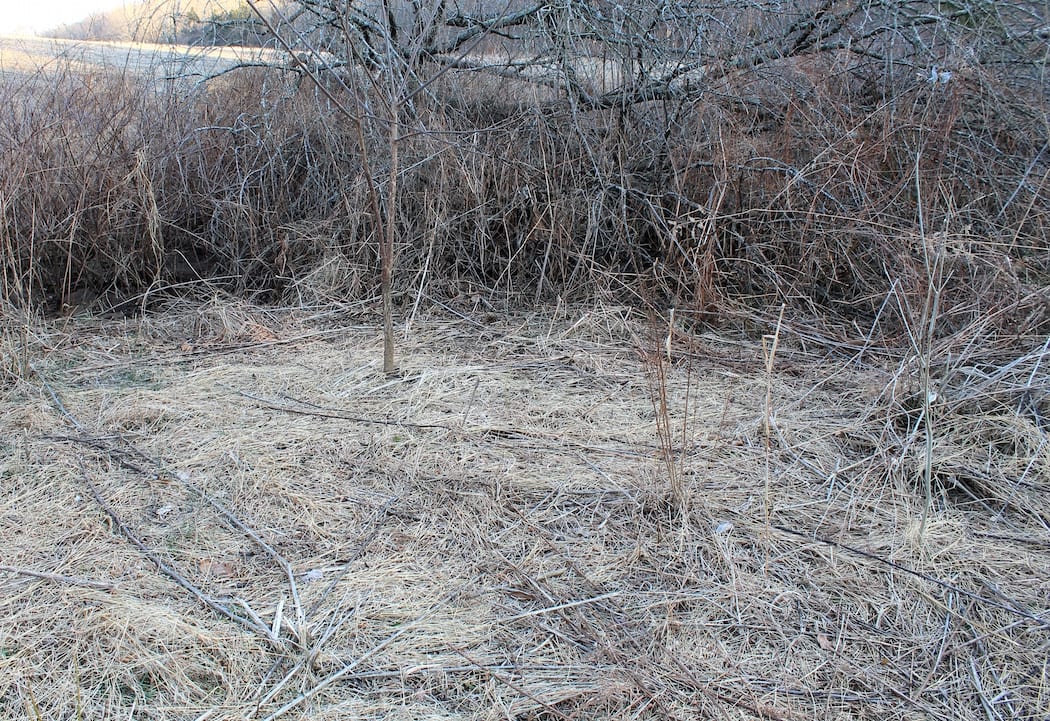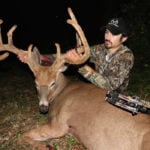I’m the type of hunter who prefers to stay back in the shadows and do everything possible to keep deer from knowing I’m there. Call me a purist/hybrid, but I like to watch deer do what they do naturally without me interfering in some manner. That said, calling certainly does have its place. And I never head to the October or November woods without my grunt tube and rattling antlers. They are the tools of the season if you want to rattle in a buck in the rut this year.
My Favorite Rattling Memory
It was just another morning hunt for Jesse Garrett and I. We’d hunted hard for nine straight mornings before work. A mature buck sighting around day four or five was all we had to show for our efforts. That is, until the ninth day.
See, I’d already tagged out and I was dedicating time to helping a friend of mine fill his tag. By then it was well into November and we’d been hearing reports of bucks chasing pretty hard. We were both sitting in a couple lock-on stands that I’d hung the night before when a big mature 10-point that I recognized came trailing through the woods with its nose to the ground. It followed along a trail just out of range.
When the buck was out of sight (about 50 yards in some thick cover), I released a few short grunts and clashed the horns together. All it took was a short series of rattling to capture the buck’s attention. It stood in the brush for quite some time before finally turning around and walking right to us. The buck stopped broadside at 15 yards and an arrow through the rib cage brought the big 148-inch deer down.

The author and his friend, Jesse, pose with the buck they rattled in. (Chantal Honeycutt photo).
That’s the largest buck that I’ve ever lured in — either for myself or someone else — with rattling antlers. It was a rush. And it was one of the neatest experiences in my hunting career. I’ve rattled in many bucks before then and since that day. But that one ranks high up on the list. Rattling certainly has its place in the world of deer hunting.
Why You Should Rattle
As we move closer to the rut, white-tailed bucks’ testosterone levels continue to increase. By late October, bucks are getting “frustrated” on a regular basis because they’re ready to breed, but most of the does aren’t receptive yet. That same frustration continues to build throughout the period when does finally begin entering estrus. Because of this, fights commonly break out, leaving deer hunters nationwide with good rattling opportunities.

Adding realism by using a decoy can help increase the odds of a mature deer responding well to the horns. (Phillip Vanderpool photo)
The Best Times to Rattle
Mornings are by far the best for rattling. Mid-day and afternoon hunts can produce, too. But mornings typically provide better results. Cool days are also better than warmer ones. Bucks seem to stay out longer and go back to bed later on those frosty mornings. Another key element is a cloudy sky. An overcast day will generally see more deer activity than one with bluebird skies. Lastly, it’s best to have low to moderate wind. Simply put, deer can’t hear you as easily in high winds.
As for time of year, you can’t beat the peak rut for rattling. This is when bucks are running full bore and breeding does. Those are the times when the most fights break out, too. Also, just prior to the peak rut — during the seeking and chasing phases — when bucks are heavily searching for does, is certainly a great time. Recent studies show that early in the post-rut period is also a solid time to rattle. The take home point — any time from November 1 to November 25 (ish) is a good window for clashing the antlers together.
The Best Places to Rattle
Traditional rut stands are great places to rattle. You’re already hunting those type spots. So why not rattle there? Also, setting up adjacent to thick bedding areas can produce, too.
Many of you hunt public land. Some of you hunt private property. Regardless, you can rest easy knowing that rattling techniques work well on both. However, studies show that this tactic is much more efficient when hunting populations of deer with balanced sex ratios. Also, rattling seems to work better in areas that receive less hunting pressure.

Setting up adjacent to thick bedding cover can be very productive.
How to Rattle
Most research shows that bucks — especially mature ones — respond to rattling by coming in downwind. They generally don’t come crashing in head on. Knowing this, keep the wind in your face as you move toward your setup. Then — already suspecting that a responsive buck will come in downwind — set up with a crosswind. This will give you a chance to see bucks as they attempt to circle downwind. Deer can smell you up to 400 yards away. So setting up with the wind at your back isn’t a good idea because bucks could smell you before ever making it close enough for a shot. Setting up with the wind in your face also is a mistake as deer probably will be attempting to come in from your rear.
Another thing to consider is the sun. It’s best to have it at your back so that deer have it in their on-looking eyes instead of yours. But you can’t always have the perfect scenario and having the wind in your favor is much more important than the sun in this gig.
When it comes to actually clashing the antlers, the louder the better. You want to make sure the deer you’re rattling to can hear you. Don’t just tickle those horns together. When real bucks fight, it sounds like the whole forest is about to come crashing down. You have to simulate that very same scenario. As for timing, I prefer to call for three segments, each around 90 seconds in length, and spaced about five to 10 minutes apart.
Rattling can be very effective. It kills a great number of deer every year. Try it this season and see how it works for you.

 By
By 



